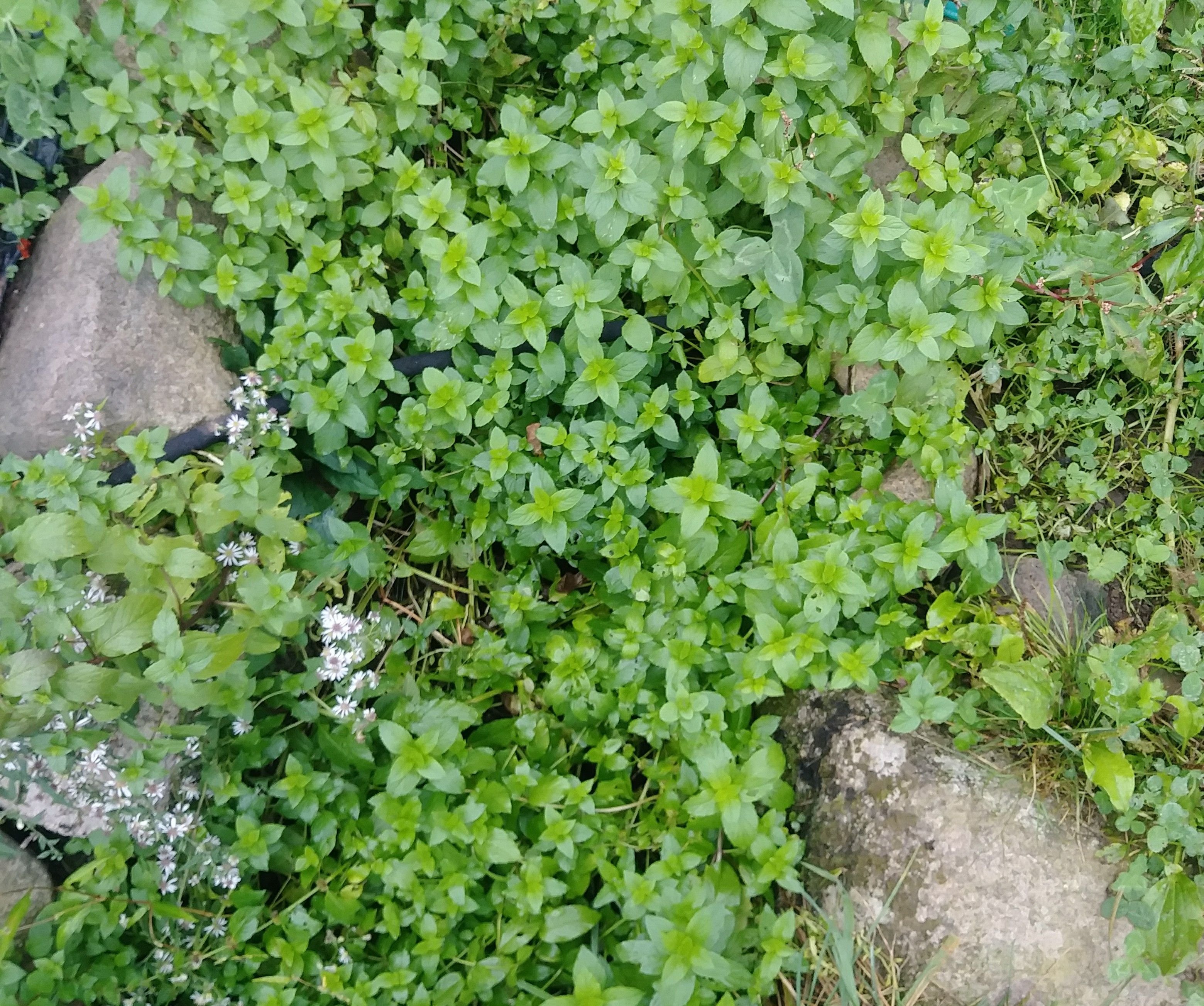Common Name: Peppermint, Mint
Botanical Name: Mentha Piperita
Plant Family: Lamiaceae
Growth: Perennial, moist soils from zones 3-11
Parts Used: Leaves, flowers, stems
Main Constituents: Menthol, menthone, flavonoids, triterpines
Key Properties: Antibacterial, Antispasmodic, Carminative, Decongestant, Expectorant, Anti-inflammatory, Analgesic, Stimulant
Peppermint
Peppermint. Almost everyone can recognize the taste of peppermint, think toothpaste, gum, and candy canes. Pleasing, refreshing, invigorating are some words that come to mind. When I think of peppermint I'm brought back to my childhood.
There was a place we used to go swimming called "the dam" Above the water reservoir/ swimming spot caused by the man-made dam, there was a natural creek where out of the rocks and through the running water an amazing amount peppermint grew on the creekbed. I used to play on the rocks, picking the mint and crushing it between my fingers, breathing the delightful scent. I've learned more about mint since then and I'd like to share what I've learned with you.

Peppermint grows in a variety of soils and seems to really like soggy moist areas on my property. It propagates so well from pieces of root that I established a huge patch in the ditch that surrounds some of my raised beds by just pulling pieces from my current patch and throwing them on the ground. They rooted themselves, growing vigorously and spreading dramatically.

Peppermint is a welcome addition in the vegetable garden as it deters harmful insects with its pungent scent, while attracting beneficial insects with its tiny but many blossoms.

Most frequently I use peppermint leaves dried and in tea. The oils in peppermint are antispasmodic and carminative and as such are very effective at soothing an upset stomach, whatever the cause.

I use this tea when I have a cold as well, due to menthol's decongestant, expectorant and pain relieving properties. Along with a spoonful of raw honey, a few tablespoons of dried partially crushed leaves and fresh boiled water are all you need to make a potently cold combatitive cup of tea.

One of my favorite uses for peppermint is in the form of its essential oil. I use a few drops in a sink of water for wiping down counters and floors. The oil is antibacterial, and energizes me while I clean!

The key volatile oils in peppermint are Menthol and Menthone, which are very effective analgesics (pain killers). Peppermint essential oil mixed with a carrier oil in a small roller bottle is the best remedy against a headache that I've ever come across. I started getting migraines and tension headaches a few years ago and now if I feel one coming on, I use this mixture at the base of my skull and on my temples for immediate relief.

What do you use peppermint for in your home?
Let me know in the comments below!
Take care,
@amymya

Further reading and sources:
https://www.ncbi.nlm.nih.gov/pubmed/8805113
Wormwood, Valerie Ann. The Complete Book of Essential Oils and Aromatherapy, New World Library, 2016.
https://www.umm.edu/health/medical/altmed/herb/peppermint
All photos are my own

banner by @soulturtle
